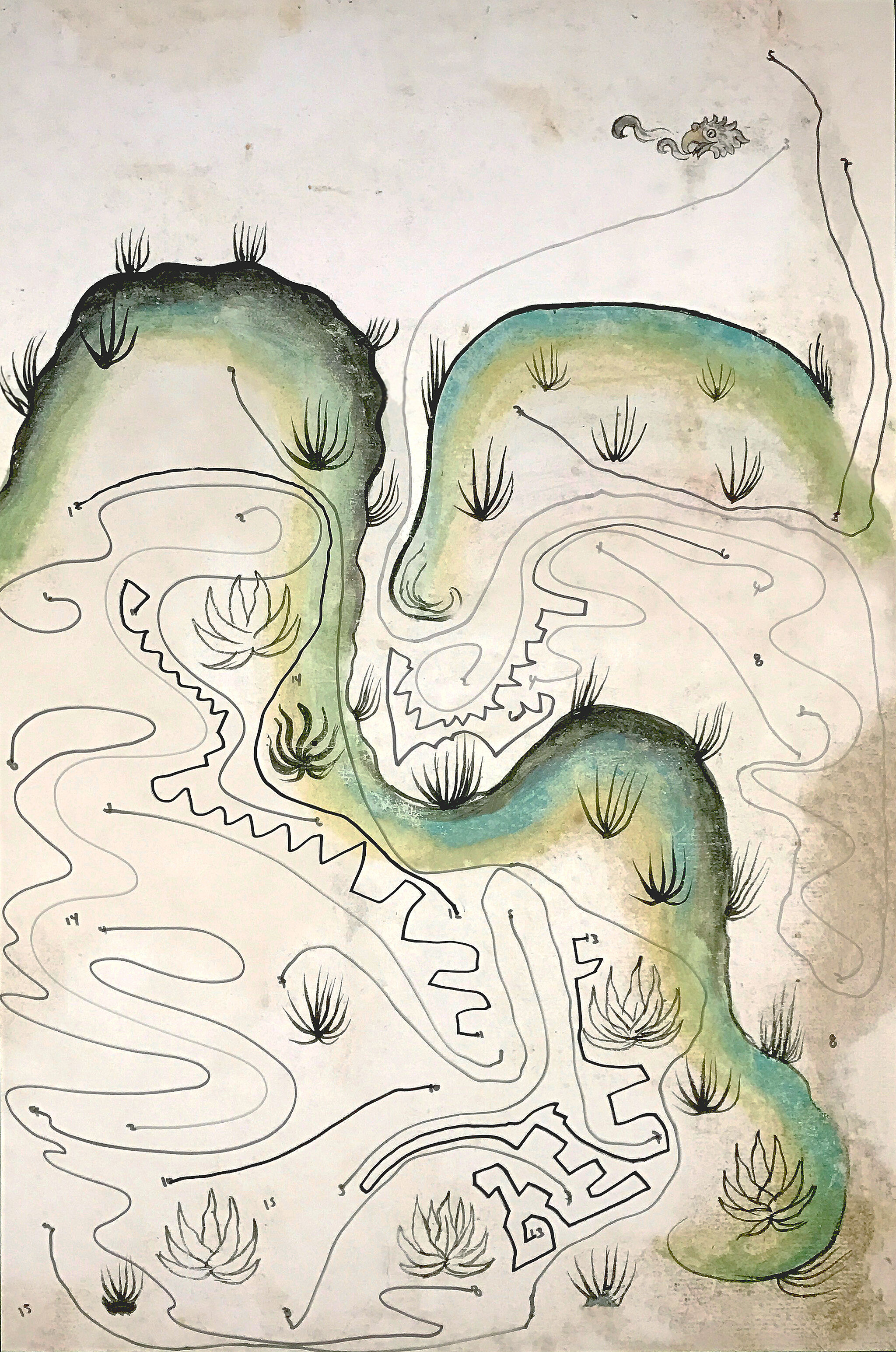Pacha, Llaqta, Wasichay: Indigenous Space, Modern Architecture, New Art | Art & Artists
July 13–Sept 30, 2018
Pacha, Llaqta, Wasichay: Indigenous Space, Modern Architecture, New Art | Art & Artists
Guadalupe Maravilla (formerly known as Irvin Morazán)
4
Formerly known as Irvin Morazán, the artist recently readopted his birth name, Guadalupe, and his undocumented father’s pseudonym, Maravilla, as his last name. His drawings take their inspiration from maps in a sixteenth-century Nahuatl manuscript about the Toltec and Chichimec peoples of a region now part of central Mexico, Guatemala, and El Salvador. Reproducing some of the book’s pictographic symbols alongside lines suggestive of immigration routes, Maravilla alludes to his own childhood path from El Salvador to the United States. He drew the lines in collaboration with undocumented immigrants in this country by playing Tripa Chuca, a popular Salvadoran game in which two players take turns drawing lines that do not intersect. By using a book dating from the Spanish Conquest as a point of departure, Maravilla gives historical significance to contemporary experiences of immigration.

